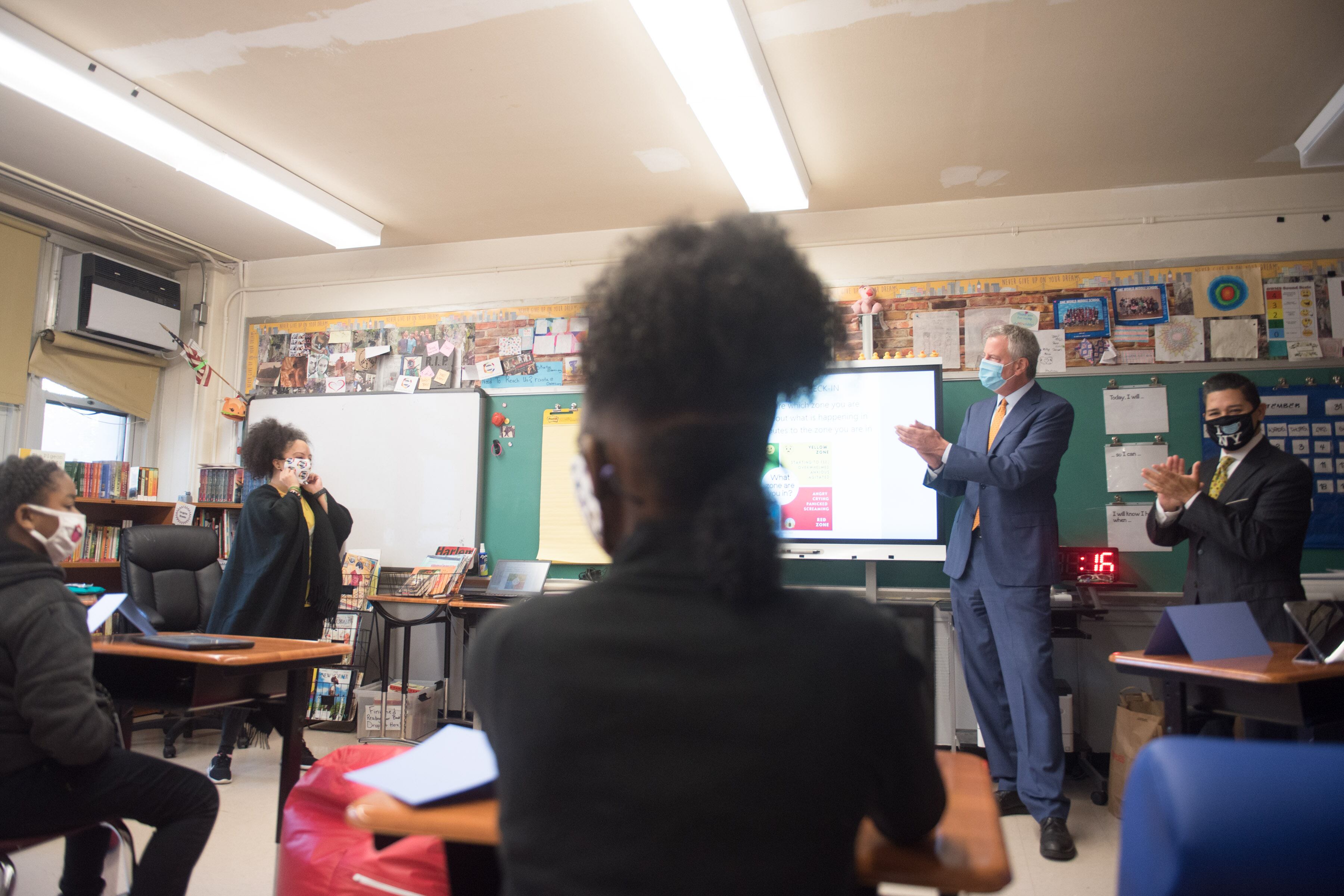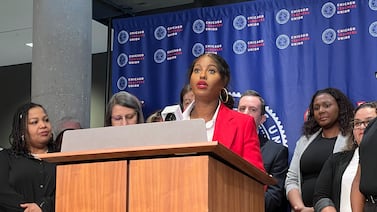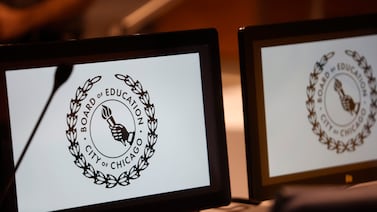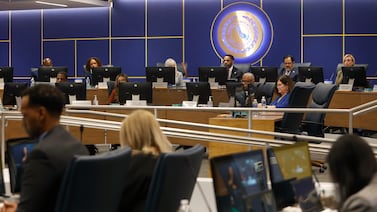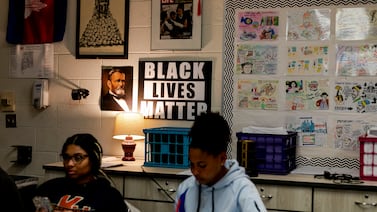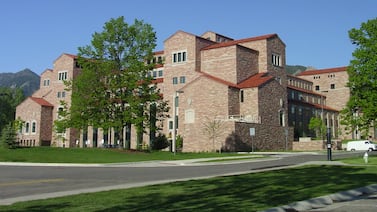The coronavirus pandemic will force major changes in the ways students are admitted to New York City’s competitive middle and high schools this year, Mayor Bill de Blasio and Chancellor Richard Carranza announced Friday.
Middle schools will not use test scores or other academic “screens” to select students, auditions for performing arts schools are going virtual, and the controversial Specialized High School Admissions Test will be administered in middle schools across the city, rather than at just a handful of campuses.
The city will also eliminate a district-based admissions preference that has allowed some of the city’s wealthiest ZIP codes to carve out a set of its own elite high schools.
New York City is home to one of the most segregated school systems in the country, a status driven partly by its admissions practices. For years, integration advocates have been pushing the city to revamp the competitive and stressful process for the city’s 10- and 13-year-olds, which often favors more affluent families that have the time and savvy to navigate it.
De Blasio has proved reluctant to pursue citywide reform until, late into his final term, the pandemic forced his hand. An overhaul became inevitable in the wake of the health crisis as the main data points used to screen — last year’s fourth and seventh grade state tests, grades, and attendance — were put on pause or dramatically changed.
On Friday, the mayor provided some of his most forceful comments yet about the need to pursue integration measures.
“If we say the price of a quality education is segregation, well that’s ridiculous. If we say we want everyone in the same classroom together, but we don’t care about educational quality, well that’s ridiculous, too,” he said. “I think we’ve all been sold a false premise. We can actually do both — we can have quality schools and schools where we all learn together.”
Some of the changes take aim at polices that have been seen as instrumental to getting more affluent and white parents to enroll in the public school system. The mayor acknowledged the new plan could be difficult for some parents to accept, but said that he hoped it could eventually build buy-in for more changes.
“We want to work with school communities. We want to listen to educators and parents. But what is clear is that our past involves too much exclusion. Our past includes too much inequality,” he said. “We need to move to a different place.”
In addition to the new admissions policies, the city is opening applications for grants for five more districts to pursue integration plans on their own — bringing the total to 10 districts.
Some of the changes now going into effect could set the city on a path towards more diverse schools. But there are good reasons to be skeptical since the city is not implementing any reforms that explicitly favor integration, and admissions systems based purely on choice have consistently failed to produce more representative schools.
One of the most explosive admissions debates remains unresolved. A decision has still not been made about applying to the city’s gifted & talented programs for elementary schools.
Entry to these coveted programs hinges on a standardized test given to preschoolers, administered one-on-one by a proctor. It could prove difficult to administer safely in the midst of rising coronavirus cases across the city. Moving the process online would raise equity issues, since thousands of students lack access to devices or reliable internet. Currently, enrollment in gifted and talented programs is disproportionately Asian and white.
Now that schools and families know how the process will work, the city must communicate the changes widely and clearly, said Karuna Patel, deputy director of the Feerick Center, which has advised the education department on ways to make the admissions system more fair. Otherwise, families who have traditionally struggled to make sense of the process could be at a disadvantage.
“You can imagine the flow of information, if it’s not coming through DOE well, it’s really going to exacerbate the problems we’re talking about. Who does best in a system where information is king?” she said. “They really need to be thoughtful about how to implement this.”
Sweeping changes for middle schools
The most sweeping changes will affect middle schools.
All middle schools will pause their use of academic screens for one year, the education department said. That includes auditions for performing arts programs and school-based assessments.
Around 40% of middle schools currently accept students based on their academic records. Schools that don’t have enough seats for all applicants will base admissions on a lottery.
There is precedent for such a move: Brooklyn’s District 15 recently eliminated screening at its middle schools in favor of a lottery. The aim was to create more diverse schools, and early data show progress towards that goal. But Brooklyn’s plan includes something that the city’s does not: a priority geared towards admitting students who represent the district’s racial and economic diversity.
It’s possible that a lottery for middle schools does not change school demographics significantly, especially in districts that are not diverse themselves. Without an explicit focus on admitting a diverse group of students, admissions systems based purely on choice often fall short of integration goals. District 1 on the Lower East Side had such a system, and its schools were deeply segregated. Parents recently lobbied to add admissions priorities to the lottery to encourage more diversity.
“Experience tells us that choice alone is not enough to guarantee there will be diverse and integrated schools in any given district. We’ve found there need to be some guardrails,” said Stefan Lallinger, a fellow at The Century Foundation think tank, where he leads a nationwide initiative to encourage school integration.
The education department said that district priorities will remain in place, which give students an admissions preference based on where they live, in order to allow younger students to attend schools closer to home. Schools like those in District 15, which give other preferences that aren’t based on academic records, will be allowed to keep those intact.
The elimination of middle school screens will only be for one year. With Mayor Bill de Blasio term-limited, that could turn school integration and admissions policy into an issue on the campaign trail to replace him. At both the middle- and high school-level, selective admissions practices have been credited with drawing white and more affluent families into the public school system, and many parents who have managed to navigate the system well have fought to preserve it.
Threats of white flight are often leveled against integration proposals, but research suggests that more diverse schools are beneficial for students of all races and backgrounds, Lallinger said. De Blasio echoed that point on Friday.
“You give everyone a chance to learn together, they benefit from it. They gain from it. It’s an education unto itself for people to learn together and get to know each other,” he said. “I understand the emotions of parents who believe there was one particular way to do things and then to see that changing, that for them that can be difficult.”
Middle school applications will open the week of Jan. 11, and close the week of Feb. 8th.
High schools to continue screening
High schools will still be allowed to screen students, relying on academic records from before the health crisis struck. The most notable change is the immediate elimination of district admissions priorities.
New York City’s high school application process was designed to open access to students regardless of their ZIP codes. But some schools across the city give priority to those students living within their own district. Nowhere is it more controversial — and fiercely guarded — than Manhattan’s District 2.
Spanning TriBeCa to the Upper East Side, the district is one of the whitest and most affluent, and students who live there have been given admissions preference at a handful of coveted high schools. Those schools are especially segregated, with almost quadruple the enrollment of white students compared to the citywide average. Recently, principals at four schools that offer District 2 priority called on the city to eliminate it, in the hopes of enrolling a more diverse student body.
For next year’s admission cycle, the city plans to do away with any other geographic priorities, including admissions preferences given to students within the school’s borough.
The changes may not amount to much when it comes to school integration since schools can still screen students. New York City has a higher share of “screened” schools than anywhere else in the country, meaning many of the most sought-after programs admit students based on their academic records. Getting accepted to these schools is often a competitive and complicated process, and screened programs tend to enroll fewer Black, Latino, and low-income students.
The city is taking steps to make the process more transparent and streamlined: High schools will be required to post their long-shrouded admissions rubrics publicly, and the education department, instead of schools themselves, will be responsible for ranking where applicants fall on acceptance lists.
High school applications will open the week of Jan. 18. The deadline will be the week of Feb. 22.
The SHSAT will go on
Students will take the entrance exam for specialized high schools — widely regarded as the Ivy League of public high schools — at their own middle schools. Registration for the exam begins on Dec. 21 and closes on Jan. 15. The test will be administered starting the week of Jan. 27.
Eighth graders who opted to attend school in person this year will take the test alongside their “cohorts,” the group of children in their classes, to account for social distancing and limit possible exposure to the coronavirus and cut down on the need to travel to take the test. Most New York City students, however, have chosen to learn exclusively from home. Those students will have to test in-person at their schools, the education department said. Make-up dates will be scheduled for students who may be quarantined on their test day.
One of the city’s most heated admissions debates has long centered on the specialized high schools like Stuyvesant and Brooklyn Tech, which admit students based solely on the results of a single test.
De Blasio launched a campaign to eliminate the test, which is required by state law. He faced a wave of protest and a lawsuit. Pushback has been particularly fierce among Asian parents, whose children make up a majority of enrollment in the specialized schools.
But many blame the exam for excluding other students of color. The schools enroll only about 10% Black and Hispanic students, who together make up almost 70% of enrollment citywide. Integration advocates have lobbied the legislature to do away with the exam, and argued that the ongoing pandemic makes it unsafe to administer in person.
The city could likely do away with the exam at five of the eight schools that require it (a ninth specialized high school for performing arts requires auditions), though mayor de Blasio has disputed that.
Auditions pivot to online
Students trying out for performing and visual arts programs — including the famed LaGuardia High School of Music and Art and the Performing Arts in Manhattan and Queens’ Frank Sinatra School of the Arts — will submit their applications virtually. Students will record themselves singing, dancing, or performing monologues, or take pictures of their work.
Some schools posted about the new online process on their websites, but the education department said at the time that the information shared prematurely and hadn’t been finalized.

